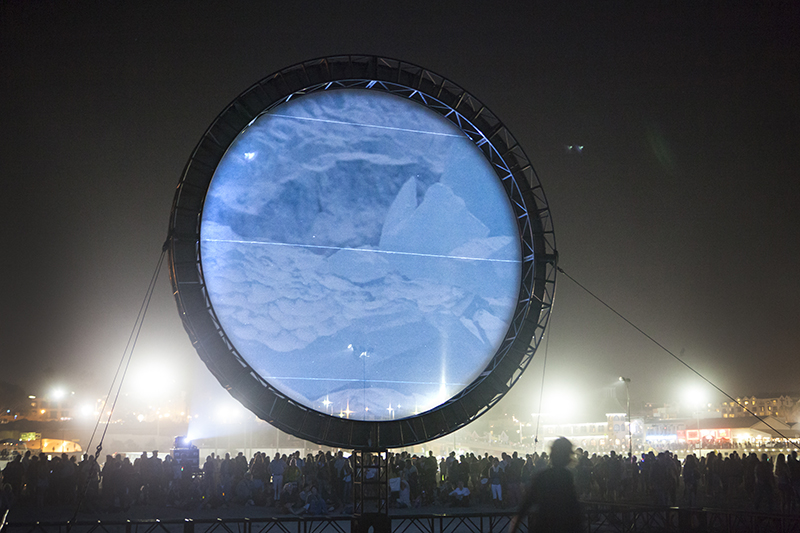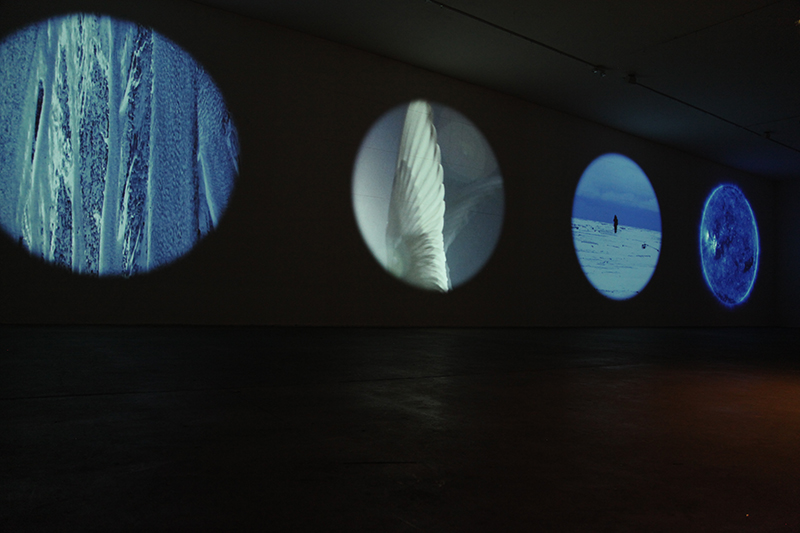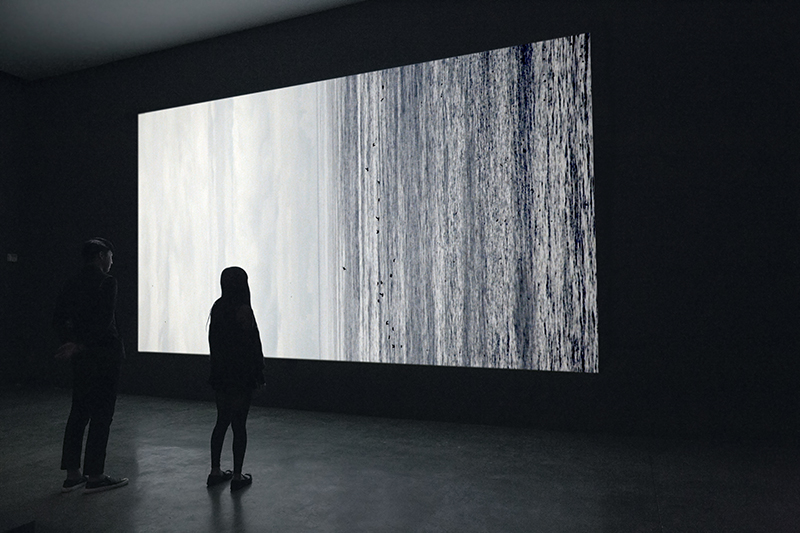
CircumSolar, Migration 1 as exhibited at Glow, an all-night arts event in Santa Monica beach, on September 28, 2013. (Citation: From "CircumSolar, Migration 1," courtesy of Rebeca Mendez Studio.)
Designer, professor, interdisciplinary artist, and 2017 AIGA Medalist Rebeca Mendez’ career journey has always had an international bent. Born in Mexico, Mendez came to the United States in 1980 and enrolled at the Art Center College in Pasadena the following year. After working in the design field for five years, Mendez returned to the Art Center, when she joined its Design Office in 1989. These days, her interdisciplinary work in photography and video takes her across the globe, and ultimately led her to focus her expertise on the area where design and social issues intersect.
As part of her work as director of the CounterForce Lab at UCLA, Mendez works every day to find design solutions that ebb the momentum of one of the world’s pressing environmental problems—climate change. And so, when asked to choose a social issue of import to her that design could impact, she turned to nature for inspiration. Through the study of far-journeying migratory birds for her project CircumSolar, Mendez saw a reflection that couldn’t be ignored—our own.
Mendez is passionate in her belief that art can change the conversation around human migration (and immigration) for the better. It’s true that these days, the issue of migration is highly politicized—but in the eyes of Mendez, nature shows us borders are artificial to the journeys we all make. —Lilly Smith
(im)migration
As an immigrant myself, I am interested in issues relating to the migration of both animals and humans. Scientists, farm workers, presidents, artists—we all journey back and forth dozens of times in the course of our life, establishing a periodic migratory pattern not unlike that of many animals and birds. Current immigration crises around the world, and specifically along the Mexico/U.S. border, where hundreds of migrating children, women, and men have lost their lives, question the geopolitics of territorial boundaries.
I firmly believe that no human is—or ever could be–illegal. It is a fundamental flaw in human reasoning and law to think otherwise, and stands as a collective testimony of mankind’s inhumanity towards its fellow beings. A different narrative needs to be posited—one that obliterates entrenched exceptionalism and embraces our shared origin as a species—making us all equal in our pursuit of opportunity, security, liberty, and happiness.
With this in mind, I created CircumSolar (2013–present), a long-term, cross-disciplinary, and multimedia fieldwork project that follows the journey of a small seabird, the arctic tern (Sterna Paradisaea), on its annual migration from the Arctic to the Antarctic and back again; an approximate 50,000 mile journey and the longest migration pattern ever recorded. This intrepid seabird calls the entire span of the earth’s meridian its home. As such, it experiences two polar summers a year—the most daylight of any living being.
Even greater than the earth’s complex weather systems, bird migration is the world’s unifying natural phenomenon. Scientists estimate there are between 200 and 400 billion wild birds in the world, divided in about 10,000 different species. Forty percent of this total are of the migrating kind, so at least 80 billion birds take flight each fall. CircumSolar seeks to create a new mythology for our times, with the resilient arctic tern as its protagonist, to embolden and enlighten all (im)migrants on their heroic journey.



